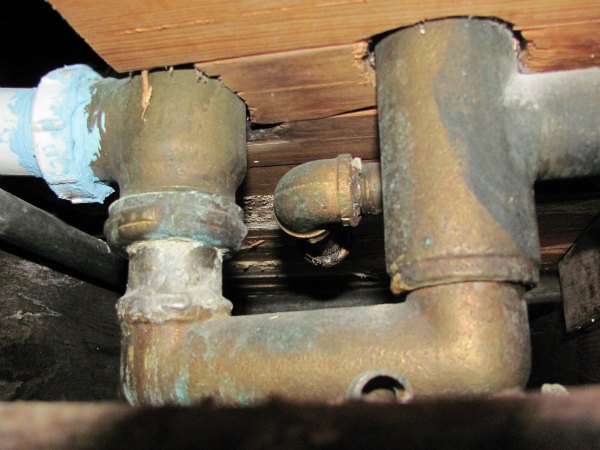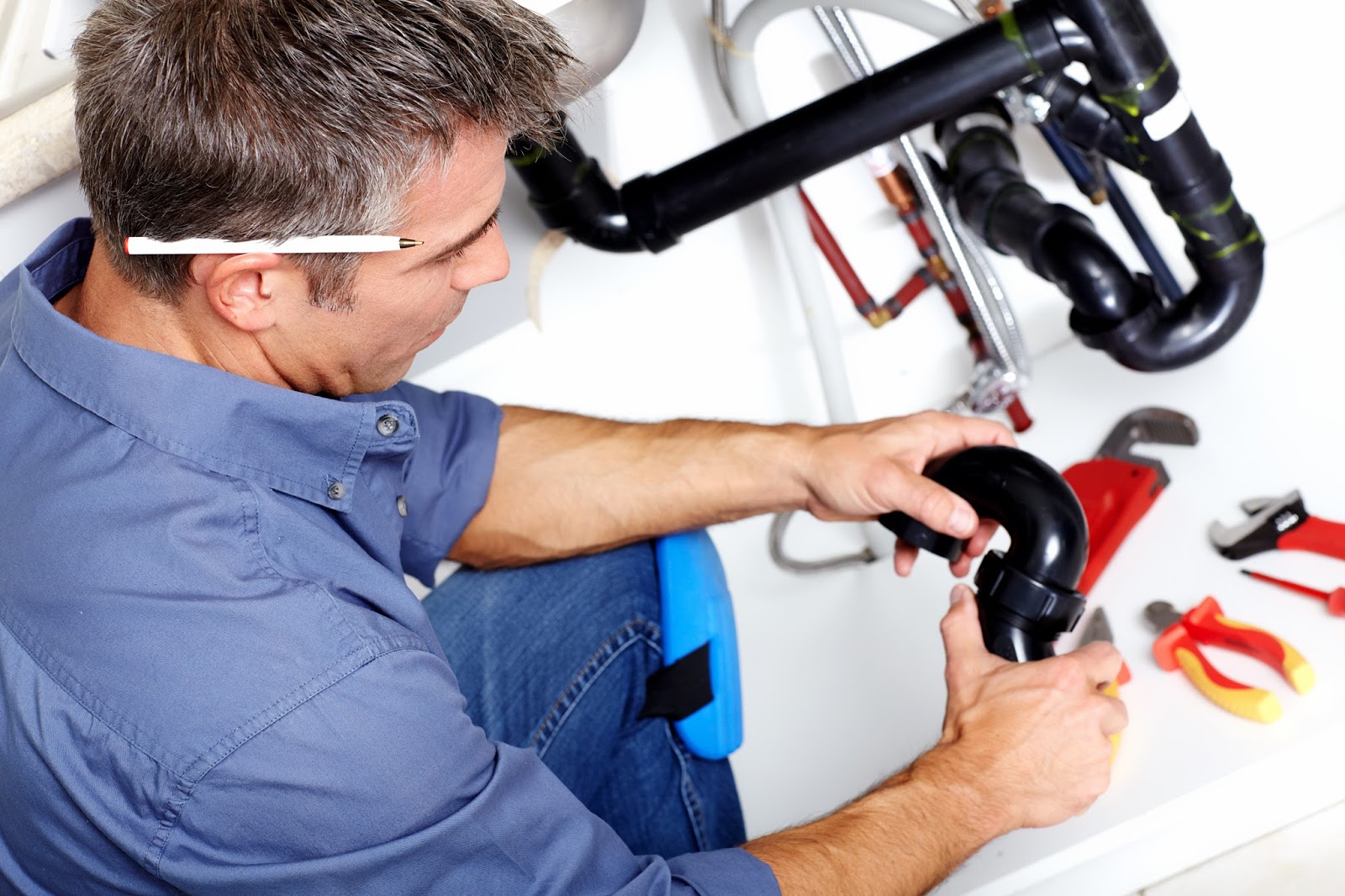Solving Plumbing Issues in Older Homes: A Comprehensive Guide
Solving Plumbing Issues in Older Homes: A Comprehensive Guide
Blog Article
Just how do you actually feel in regards to Common Plumbing Challenges In Old Buildings?

Older homes frequently feature beauty, character, and background, but they can likewise bring a host of plumbing concerns. Whether you're handling maturing pipes, low tide pressure, or leakages, understanding just how to attend to these common issues is essential to maintaining a secure and functional home. In this overview, we'll explore the normal plumbing difficulties faced by older homes and supply useful options to maintain your pipes in top form.
Recognizing Usual Pipes Concerns
Aging Pipes
One of the most common issues in older homes is maturing pipes. Depending upon the era in which your home was constructed, the pipes may be made from materials that have actually worn away in time, such as galvanized steel, cast iron, or even lead. These products can corrode, come to be fragile, or establish leakages, resulting in water damage and prospective carcinogen.
Low Water Stress
If you're experiencing low water stress, maybe due to mineral deposits, corrosion inside the pipelines, or old components that are no more working effectively. This can be a significant aggravation, specifically in areas like showers and sinks.
Dripping Pipelines
Leakages are another constant concern in older homes, usually brought on by rusty or damaged pipelines. Also little leaks can bring about considerable water damage, mold and mildew growth, and enhanced water costs if not attended to without delay.
Outdated Components
Obsolete plumbing components such as faucets, commodes, and showerheads not just look old but may likewise be much less efficient, prone to leaks, or incompatible with contemporary plumbing requirements.
Pipe Deterioration
Corrosion is an usual trouble in older pipelines, particularly those made from galvanized steel or cast iron. Rusty pipes can restrict water flow, cause staining, and ultimately lead to leaks or pipe ruptureds.
Evaluating the Condition of Your Plumbing
Inspecting Visible Pipelines
Begin by evaluating any noticeable pipes in your house, such as those in cellars, crawl spaces, or under sinks. Try to find indications of corrosion, leakages, or rust, which can suggest underlying concerns.
Checking for Leaks
Check for leakages by evaluating areas around faucets, toilets, and under sinks. You can likewise monitor your water meter prior to and after a duration of no water utilize to spot surprise leakages.
Water Quality Screening
Older pipes can impact the top quality of your water. Conduct a water quality examination to look for pollutants such as lead, rust, or other impurities that might be presented by aging pipes.
Solutions for Typical Plumbing Problems
Changing Aging Pipes
If your home has old, weakening pipes, take into consideration changing them with modern materials like copper or PEX. This can be a substantial financial investment, however it will stop future concerns and enhance the security and reliability of your plumbing system.
Dealing With Low Tide Pressure
To take care of low water stress, start by cleansing or changing old components and eliminating mineral accumulation in the pipes. If the issue continues, it might be essential to change areas of corroded pipes.
Fixing and Replacing Dripping Pipes
For tiny leakages, you can use pipeline clamps or epoxy putty as a temporary fix. However, it's ideal to replace dripping pipes totally to prevent more damages.
Updating Components
Upgrading old components to modern, water-efficient designs can enhance your home's plumbing performance and lower water consumption. Try to find fixtures with the WaterSense label for the very best performance.
Handling Pipeline Corrosion
If your pipelines are rusted, replacing them with corrosion-resistant materials like copper, PVC, or PEX is the very best remedy. Regular examinations and water quality maintenance can help stop further rust.
When to Call an Expert
While some pipes issues can be managed with do it yourself remedies, there are times when it's best to employ a specialist. If you're handling significant leaks, considerable corrosion, or are uncertain regarding the problem of your pipes, a licensed plumbing technician can provide experienced analysis and repair work.
Preventive Upkeep Tips
Regular Inspections
Consistently check your plumbing system for indications of deterioration. Capturing problems early can protect against expensive fixings down the line.
Water Stress Guideline
Guarantee your water pressure is within the advised range to stay clear of stressing your pipes and components. A plumber can mount a pressure regulatory authority if required.
Water High Quality Maintenance
Mount water filters or softeners if your water top quality is poor. This can protect your pipes and fixtures from damages triggered by tough water or impurities.
Positive Pipe Substitute
If your home has older pipes, take into consideration aggressive substitute prior to significant issues occur. This can conserve you from emergency situation fixings and water damages.
Conclusion
Dealing with pipes concerns in older homes needs a mix of vigilance, preventive upkeep, and prompt upgrades. By comprehending the common challenges and understanding when to look for specialist help, you can ensure your plumbing system remains practical and trustworthy for several years to find.
Common Plumbing Issues in Older Homes and How to Fix Them
Owning an older home in Australia comes with its unique charm and a set of challenges, especially when it comes to plumbing. The Sunshine Coast has many older properties that can harbour plumbing problems that aren t just inconvenient but potentially costly. Here s a look at some common plumbing issues in older homes and expert advice on how to handle them.
Outdated Piping Materials
Many older homes were built with galvanised steel, cast iron, or even lead pipes, materials that are far from ideal by today s standards. Galvanised pipes are prone to corrosion and clogging, while lead pipes pose serious health risks.
How to Fix:
Replacing old pipes is a job for a professional. Upgrading to copper or PVC piping not only enhances water quality and flow but also increases the property s safety and value. If you suspect your home has outdated materials, a licensed plumber can conduct a thorough inspection and recommend the best course of action.
Corrosion and Pipe Degradation
Over time, exposure to water and minerals can cause pipes to corrode, leading to leaks, bursts, and water contamination. Corrosion is especially common in homes over 50 years old.
How to Fix:
Regular inspections can catch early signs of corrosion. If corrosion is found, the affected section of piping often needs to be replaced. For homes with extensive corrosion, a complete plumbing overhaul might be necessary. It s crucial to consult with a plumbing expert to understand the extent of the issue.
Tree Root Intrusion
Older neighbourhoods usually have mature trees whose roots can intrude into pipe lines, causing blockages or damage. This is particularly problematic for sewer lines, where roots seek out water sources.
How to Fix:
A plumber can use a specialised camera to inspect sewer lines for root intrusion. If roots are a problem, methods like root cutting or hydro-jetting can clear the obstruction. In severe cases, part of the pipe may need replacing. Consider root barriers around the piping to prevent future issues.
Inadequate Water Pressure
Low water pressure in older homes can be due to various factors, including corroded water lines, sediment build-up in pipes, or outdated fixtures.
How to Fix:
First, check if the low pressure is isolated to one area or throughout the house. Replacing old fixtures can sometimes resolve the issue. However, if the problem is more widespread, it might be due to sediment or corrosion. Flushing the system or replacing the affected pipes usually restores normal pressure. Again, a professional assessment is advisable.
Outdated Fixtures
Older homes often feature fixtures that are not only visually dated but functionally inefficient. This includes everything from toilets and taps to showerheads and washing machine hoses.
How to Fix:
Updating these fixtures can improve both water efficiency and the aesthetic appeal of your home. Modern fixtures are designed to conserve water, which can significantly reduce your water bill and lessen your environmental impact.
Conclusion
Maintaining the plumbing in an older home requires a proactive approach. Regular checks and updates are key to preserving these beautiful properties. If you re facing plumbing issues in your older home, it s best to call on experienced professionals like Green & Gold Plumbing & Gas. With the right expertise, even the most daunting plumbing problems can be resolved, ensuring that your home s character is maintained while its functionality is enhanced.
https://gandgplumbing.com.au/common-plumbing-issues-in-older-homes-and-how-to-fix-them/

Hopefully you enjoyed our post on Plumbing Problems In Old Homes. Thank you so much for taking the time to read through our article. Appreciated our entry? Please quickly share it. Help other people locate it. I truly appreciate your readership.
Free Estimates Report this page